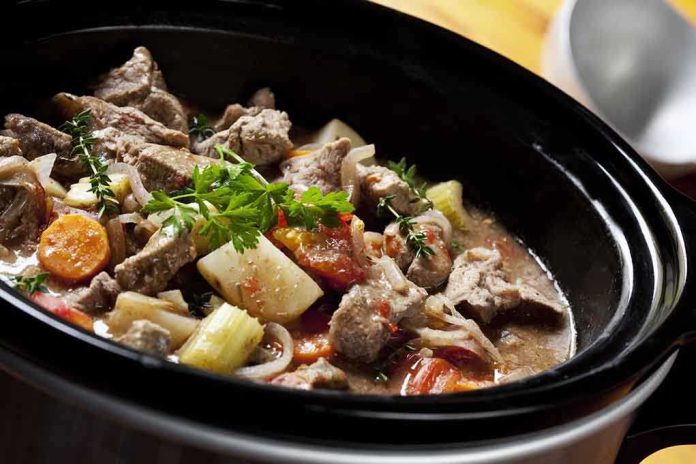
If you think only blueberries and kale are fighting the battle against aging, wait until you find out why peanut butter and potatoes might be your new antioxidant superheroes—and how your morning coffee is quietly leading the charge.
At a Glance
- Peanut butter, coffee, potatoes, and other everyday foods pack major antioxidant power—sometimes more than so-called “superfoods.”
- Dietitians recommend eating a wide variety of whole foods, not just the brightest or trendiest, for optimal antioxidant benefits.
- Preparation methods and even the color of food (or lack thereof) influence antioxidant content and health impact.
- Science favors whole foods over supplements for real-life disease-fighting results and long-term health.
Surprising Superstars: Antioxidant Powerhouses Hiding in Plain Sight
Imagine a world where your potato side dish, morning oats, and that humble jar of peanut butter are quietly outshining the latest “berry of the month” on the antioxidant stage. For years, the mantra has been “eat the rainbow,” as if Mother Nature’s paint palette was the key to eternal youth. Yet, new research, and the dietitians who love it, are torching that old script. Turns out, some of the most potent antioxidant-rich foods in your pantry are the ones that never make the Instagram highlight reel.
7 Surprising Antioxidant-Rich Foods You Should Eat, According to Dietitians
https://t.co/t9CDHOQgvW— Paul Quibell-smith 🔶 (@QuibellPaul) July 24, 2025
Peanut butter, for example, is more than an after-school sandwich spread. Made from unblanched peanuts (skins on), it’s loaded with phenolic acids—potent antioxidants that help mop up free radicals before they spark cellular chaos. Oats, meanwhile, offer up not only polyphenols but a rare antioxidant called avenanthramide, unique to oats and linked to heart health. And don’t overlook potatoes. Once maligned as “empty carbs,” their skins are brimming with both vitamin-based and polyphenol antioxidants, giving kale a real run for its money.
Why Antioxidants Matter: The Backstory on Cellular Warriors
Antioxidants aren’t just a nutrition marketing buzzword; they’re molecular bodyguards that neutralize free radicals, those unstable molecules generated by everything from digestion to city smog. Left unchecked, free radicals damage cells, accelerating aging and increasing risk for chronic diseases like cancer and heart disease. This battle isn’t new—scientists first spotlighted vitamin C and E in the mid-20th century—but research has since revealed a sprawling family of plant-derived antioxidants, from the polyphenols in coffee to the glutathione in mushrooms.
The real plot twist came when large-scale studies on antioxidant supplements fizzled, sometimes even showing harm. The consensus now: skip the pills and get your antioxidants from real food. Why? Because the nutrient “matrix” in whole foods works in harmony, delivering benefits that isolated supplements just can’t replicate.
Breaking the Color Code: Why Brown and Beige Belong on Your Plate
It’s natural to assume the brightest foods are the healthiest—after all, “eat the rainbow” is catchy. But dietitians like Alyssa Pike, RDN, are flipping the script, pointing out that many brown and even white foods are antioxidant dynamos. Dates, for instance, are little flavor bombs packed with carotenoids, flavonoids, and phytosterols—compounds that help protect against chronic disease. Olives, though modest in hue, are loaded with vitamin E, quercetin, and hydroxytyrosol.
Even coffee, that daily ritual, is an antioxidant juggernaut. With over 100 polyphenols per cup, coffee’s antioxidant content varies with preparation style, but its disease-fighting resume is hard to beat. Mushrooms, long ignored by the “superfood” spotlight, boast ergothioneine and glutathione, antioxidants linked to brain health and longevity. The message from experts: don’t judge a food by its color.
How to Eat for Antioxidant Synergy—and Why Variety Wins
Dietitians stress that antioxidant benefits come from diversity and synergy. Christina Kilton, RD, LD, recommends mixing up your menu to include surprising sources like oats and olives, not just the usual berries and leafy greens. Preparation matters too: leave the skins on potatoes, choose whole-grain oats, and opt for unblanched peanut butter to maximize your intake. Coffee? Take it black or with minimal processing for a bigger antioxidant punch.
And if you’re still tempted by antioxidant supplements, consider this: the biggest studies show that whole foods consistently outperform pills when it comes to real-world health outcomes. The secret isn’t a magic bullet, but a full orchestra—each food adding its own melody to the symphony of better health. For those over 40, that means you can eat your peanut butter toast, sip your morning coffee, and know you’re winning the war against aging one delicious bite at a time.
Sources:
Healthline: Foods High in Antioxidants
Better Health Channel: Antioxidants
St. John’s Health: Top 20 Foods High in Antioxidants
PMC: Antioxidant Content of Foods














